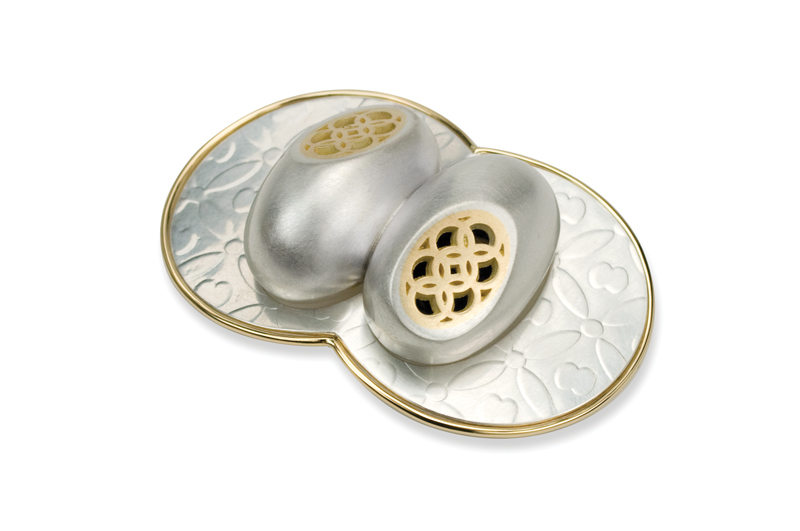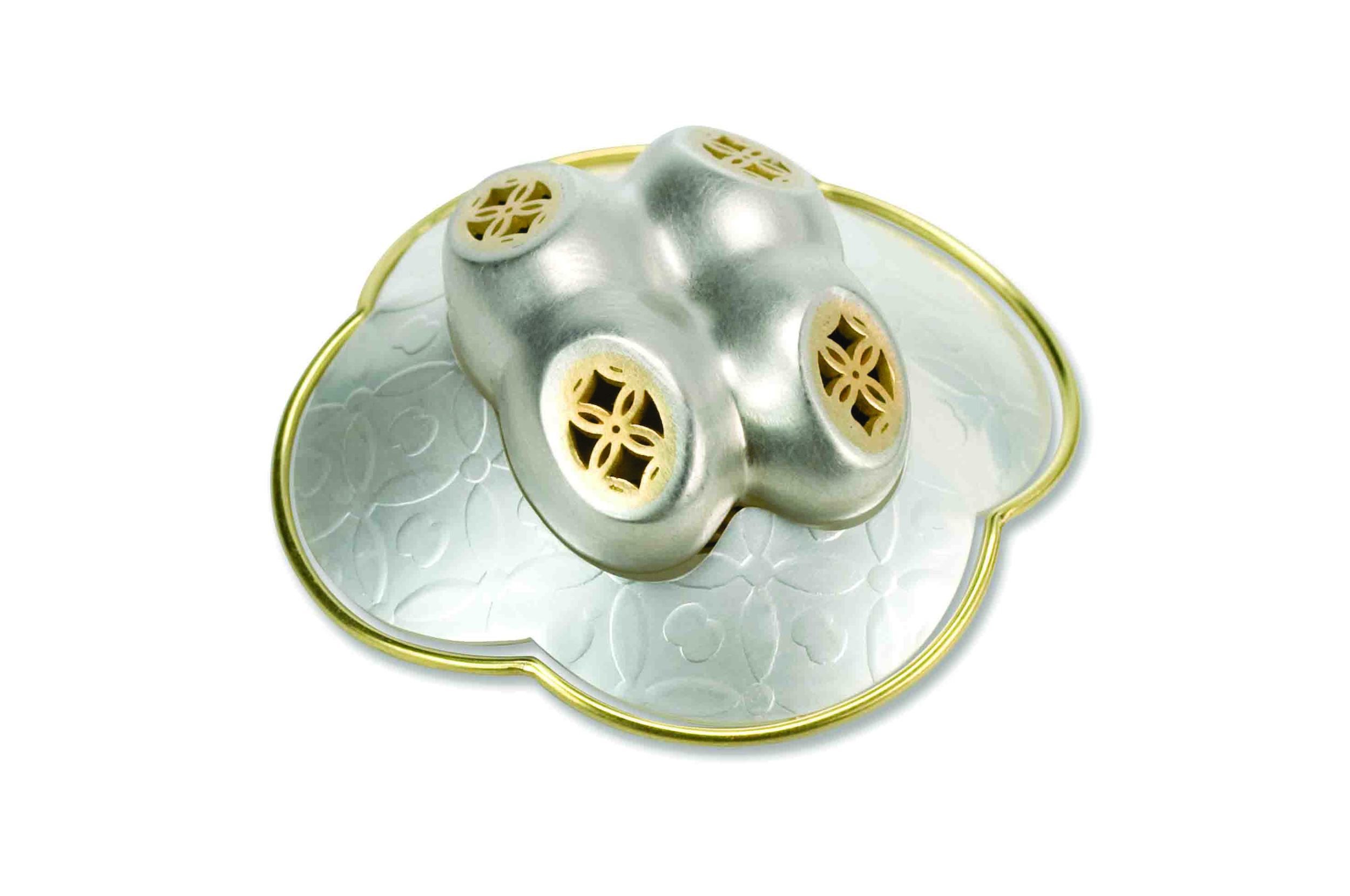


Cytula, Morula and Blastula, 2009
These brooches contain hollow forms, representing embryonic stem cells, dividing over magnified and growing floral patterns. The patterns suggest growth in their repetition and flowers, often used symbolically to represent mortality, suggest the beauty, fragility, and impermanence of life. Slices are cut away from the hollow forms to further reveal interior patterns. The use of decorative patterns in conjunction with the hollow cell forms references ideas of replication, magnification, and visualization. Cutting or slicing embodies the transition from living to dead, organism to object, and makes reference to controversial issues surrounding stem cell research and use.
Cytula, Morula and Blastula, 2009
These brooches contain hollow forms, representing embryonic stem cells, dividing over magnified and growing floral patterns. The patterns suggest growth in their repetition and flowers, often used symbolically to represent mortality, suggest the beauty, fragility, and impermanence of life. Slices are cut away from the hollow forms to further reveal interior patterns. The use of decorative patterns in conjunction with the hollow cell forms references ideas of replication, magnification, and visualization. Cutting or slicing embodies the transition from living to dead, organism to object, and makes reference to controversial issues surrounding stem cell research and use.